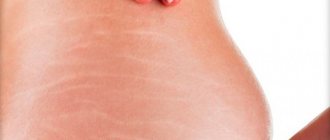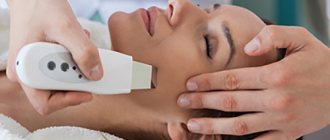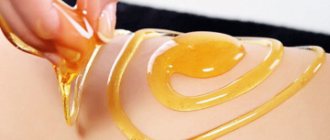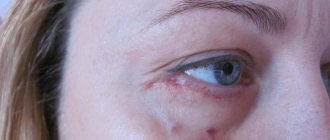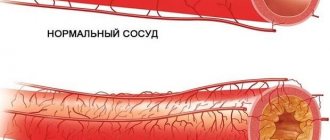Cracks on the feet are a partial violation of the integrity of the skin on the plantar part of the foot. They form more often on the heels; women are more susceptible to their occurrence. Deep cracks are unpleasant because they cause pain, take a long time to heal, and make walking and physical activity difficult. Like other injuries, they facilitate the penetration of pathogenic bacteria and fungi into the skin and are fraught with an infectious inflammatory process. Why do they arise?
Why are they formed?
Many people believe that only older people have cracks in their feet. Indeed, 25–30% of people over 40 have them. But they also occur in men, women younger than this age, and even in children.
The causes of cracks in the feet are a violation of the hydrolipid balance of the skin, a decrease in the production of collagen and elastin, and a decrease in the protective fat layer. Externally, this manifests itself in dryness, thickening, loss of elasticity, and firmness. Every day, the feet experience enormous pressure to support the body in a standing position, controlling balance when walking or running. With such a load, the skin inevitably stretches and expands. If it is dry and loses elasticity, then the likelihood of rupture when stretched under body weight will increase.
In addition to natural age-related changes, cracks in the skin of the feet are provoked by the following internal and external factors:
- wearing tight shoes;
- fungal infections, dermatitis;
- foot deformities, flat feet, heel spurs;
- poor hygiene, insufficient hydration or nutrition;
- skin contact with dry, hot air, salty sea or chlorinated pool water, ultraviolet rays;
- poor nutrition, leading to a deficiency of vitamins A, E, group B, and microelements important for skin health;
- endocrine disorders, including thyroid disease, diabetes;
- metabolic disorders;
- excess weight, which exposes the skin of the plantar part of the foot to excessive pressure and stretching;
- problems with blood circulation in the lower extremities, causing a lack of tissue nutrition;
- walking barefoot on hard surfaces (sand, stones, asphalt).
Cracks on the feet are a consequence of dry and thickened skin, or otherwise keratosis. Keratosis develops when keratinized or dead cells of the upper layer of skin do not have time to exfoliate and become layered on top of each other. In severe cases, the layer of thickened skin is 1–2 cm.
Why do men's heels crack?
If people are required to stand on their feet for long periods of time due to their professional activities, this can negatively affect the condition of their heels. This happens to the military, workers - they are often men.
There are other reasons why men’s heels crack for some reason. This is also due to the wrong choice of shoes: synthetics, artificial leather and suede do not allow oxygen to reach the skin. This causes your feet to sweat, creating an ideal environment for skin damage to occur more easily.
What are the symptoms of cracked feet and heels?
In addition to the obvious symptom of large cracks surrounded by a thick layer of dry, cracked, flaky skin, cracks in the soles of the feet cause pain when walking. The pain is localized in the area of damage, has a burning character, and intensifies with pressure. Some experience psychological discomfort, since such wounds, especially if there are many of them, spoil the appearance of the feet.
Cracks in the heels vary in depth and length. They can be single or multiple, on one heel or simultaneously on both. Usually it all starts with the appearance of dryness, hardening, and thickening of the skin along the edge of the heel. These areas look like calluses and are yellow, dark brown, or gray-white in color. At first, small cracks are visible. But if they are not treated and you continue to put pressure on the heel, they will deepen and begin to bleed.
In diseases that lead to a decrease in blood flow to the feet, there is a high risk of infectious complications, inflammation, and the formation of long-term non-healing ulcers.
Allergy
Peeling of the skin on a child’s feet is possible due to allergic reactions, atopic or contact dermatitis.
Irritation is caused by:
- washing powder that you use to wash children's socks or tights;
- baby creams, care oils;
- clothing made from synthetic fabrics;
- highly allergenic foods (citrus fruits, milk, chocolate, eggs, fish);
- insect bites;
- medicines, sweet syrups containing chemical flavors, dyes, flavoring additives.
Allergic reactions are often accompanied by severe itching. Parents should ensure that the child does not scratch the skin, otherwise an infection will occur. Antihistamines help cope with itching, redness, and inflammation. For effective treatment, it is important to identify and eliminate the allergen.
How to treat cracked feet?
To restore the skin, comprehensive treatment by a podologist is necessary, including:
- finding out the cause of cracks in the feet;
- proper care;
- selection of softening, nourishing ointments, foot creams for cracks;
- foot baths, paraffin therapy;
- keratolytic agents for removing dead skin;
- hardware pedicure.
Often cracks in the feet are the result of problems within the body. For example, endocrine, vascular or nervous disorders, lack of vitamins and minerals. It is important to establish and, if possible, eliminate the causes of cracks in the feet at the beginning of treatment. This will make it easier to restore healthy skin structure and help prevent the formation of new breaks in the future. If cracks in your feet appear regularly, you need to check your health.
One of the main treatments is hardware pedicure.
This is a safe method that:
- removes keratinized areas without injury;
- will thin out the hard edges of cracks;
- will accelerate tissue regeneration;
- will make the skin softer and more elastic.
It is recommended to perform the procedure regularly, once every 3 to 4 weeks.
To treat cracks in the feet and soles of the feet, paraffin therapy and foot baths are used as auxiliary means. Paraffin creates a film on the surface of the skin that provides protection and hydration. Baths help soften rough skin, but the possibility of their use and composition should be discussed with a doctor, since they are not always permitted.
To care for the skin, nourishing, moisturizing, and healing creams for cracks in the feet are applied several times a day. There are reviews of such products from different companies on the Internet, but you need to choose them on the advice of a doctor. In difficult cases, it is recommended to buy ointments and creams for cracks in the feet with a healing, anti-inflammatory, antiseptic, and regenerating effect. For infection, antibacterial or antifungal therapy is used depending on the type of pathogen.
If the layer of rough, dry skin is too thick, spreading over large areas of the foot, products with retinoids and keratolytics are used. They remove dead skin particles and accelerate its renewal.
The composition of keratolytic ointments includes:
- urea;
- salicylic, lactic acid;
- alpha hydroxy acids;
- fruit acids.
With deep cracks, you need to temporarily limit walking and playing sports to reduce the pressure and friction that is exerted on the injured area. If it is not possible to limit physical activity, orthoses, instep supports, insoles or patches are used. They help redistribute the load and protect the problem area.
Dry and rough heels: what else can be done at home
What else can you do to soften dry heels? In addition to basic care rituals, you can also use auxiliary beauty procedures that will help make the skin of your heels smooth and soft.
- Foot baths
: a time-tested remedy for softening and soothing dry and rough skin on the feet. Important: It is not recommended to keep your feet in water for more than 10 minutes - remember that water can dry out the skin. Before you take a herbal bath for the first time, make sure that you do not have allergic reactions to them. - Masks and compresses
: nourishing masks and compresses based on cosmetic oils are usually made after steaming and exfoliating dry skin. They help saturate the skin with useful substances, additionally nourish and soften it. - Skin polishing
: if you are used to using a pumice stone or a file to thoroughly exfoliate the stratum corneum on your heels, try to choose “soft” formats of these products. Use them no more than once a week and do not use them if you have open wounds or cracks on your skin.
How to warn?
If you have dry feet, the likelihood of cracks is high, so take care of their prevention.
What do we have to do?
- visit a podiatrist once a month for hardware treatment of the skin of the feet, removal of potentially dangerous areas - thickenings, corns, calluses where tears form;
- take care of a complete diet with sufficient vitamins and minerals;
- Every day after washing your feet before going to bed, apply moisturizing and nourishing creams to the skin of your feet;
- regularly massage your feet to improve blood circulation and metabolic processes;
- control weight;
- use special insoles, arch supports, orthopedic shoes if you have flat feet or other foot deformities;
- periodically treat feet with pumice stone and fine abrasive to remove dead cells.
If cracks appear, you should not try to eliminate them yourself, as this can worsen the situation and lead to complications. A competent approach is important here, which includes not only the treatment of cracks in the feet, but also an analysis of possible causes and recommendations for preventing relapse. If you encounter such a problem, contact a podiatrist. This is a specialist who specializes in treating diseases of the nails and skin of the feet.
11 1
Basic rules for caring for dry and rough heels
Sometimes it seems that even very dry heels do not require any special care - just regular peelings and pedicures are enough. Of course, this is not entirely true. Like any area of our body, heels need care rituals.
Cleansing
Of course, you don’t need to look for any special product for washing your heels - just choose a body cleansing gel that also has intense moisturizing properties. A good example would be CeraVe Moisturizing Cleansing Cream-Gel, which is suitable for normal to dry body skin.
Moisturizing cleansing cream-gel
For normal to dry skin of the face and body
Effectively cleanses and moisturizes the skin, helping to restore its protective barrier.
More details
CeraVe cream-gel effectively cleanses the skin and contains hyaluronic acid and glycerin, which promote intense hydration. The ceramides included in the composition are also responsible for restoring and strengthening the skin's protective barrier, helping to resist negative environmental factors.
Hydration and restoration
The second basic stage of care should be the use of a moisturizing and renewing product - such as CeraVe Restoring Foot Cream. It is designed for dry and rough skin on the feet and contains ceramides, salicylic acid and niacinamide.
Revitalizing foot cream
For dry skin
Effectively exfoliates and moisturizes chapped foot skin without irritating it.
88 ml
More details
Thanks to this composition, CeraVe Regenerating Foot Cream softens and moisturizes dry skin on the heels, restoring it. Ceramides help maintain and strengthen the skin's protective properties, while salicylic acid gently exfoliates dead skin cells and promotes rapid skin renewal.
Exfoliation
As we have already said, peeling the skin in the heel area should be quite gentle and delicate. Do not get too carried away with the use of pumice stones, active scrubs or mechanical methods of skin removal, including trimming pedicures.
Instead, it is better to use softening baths, scrubs with small abrasive particles 1-2 times a week, or, as necessary, do an unedged (hardware) pedicure in a specialist’s office. These are more gentle/gentle ways to soften and exfoliate rough, dry or rough heel skin.
Fungal infection
If your child likes to try on other people's shoes, walks barefoot in public places or goes to the pool, there is a risk that he has contracted a fungus.
In addition to peeling, this infection is characterized by the following changes in the affected area:
- itching;
- redness, inflammation;
- unpleasant odor;
- thickening of the skin;
- formation of microcracks.
It often happens that peeling is the only symptom. Parents may not suspect that it is a fungus. The skin between the toes usually suffers first, and then, if left untreated, the infection progresses.
To combat the fungus, antifungal agents are used, which are recommended by a dermatologist, mycologist or podologist. The sooner treatment is started, the easier and faster it is to get rid of the infection.
Traditional medicine recipes for flaky foot skin
In the refrigerator and at hand we have a lot of useful products that will help in the fight against dry skin on the feet. You can make all kinds of masks, compresses, and baths from them. Cosmetologists recommend using these recipes to combat peeling.
- A compress of honey and flour helps very well with peeling. You need to take two tablespoons of honey and three tablespoons of flour. Mix the ingredients until smooth. Make two small cakes from the resulting slurry. Feet should be steamed first. Place honey cakes on the steamed heels, wrap your feet in plastic and put on socks. The effect of the compress is amazing. Within a week, the skin will become soft and tender.
- Yolk ointment has a good softening, nourishing and healing effect. You need to take one yolk, mix it with a teaspoon of vinegar and a tablespoon of vegetable oil. Apply the resulting mixture to your steamed legs. The heels will delight you with softness and tenderness.
- Author: Author: Alena
Rate this article:
- 5
- 4
- 3
- 2
- 1
(16 votes, average: 3.7 out of 5)
Share with your friends!

